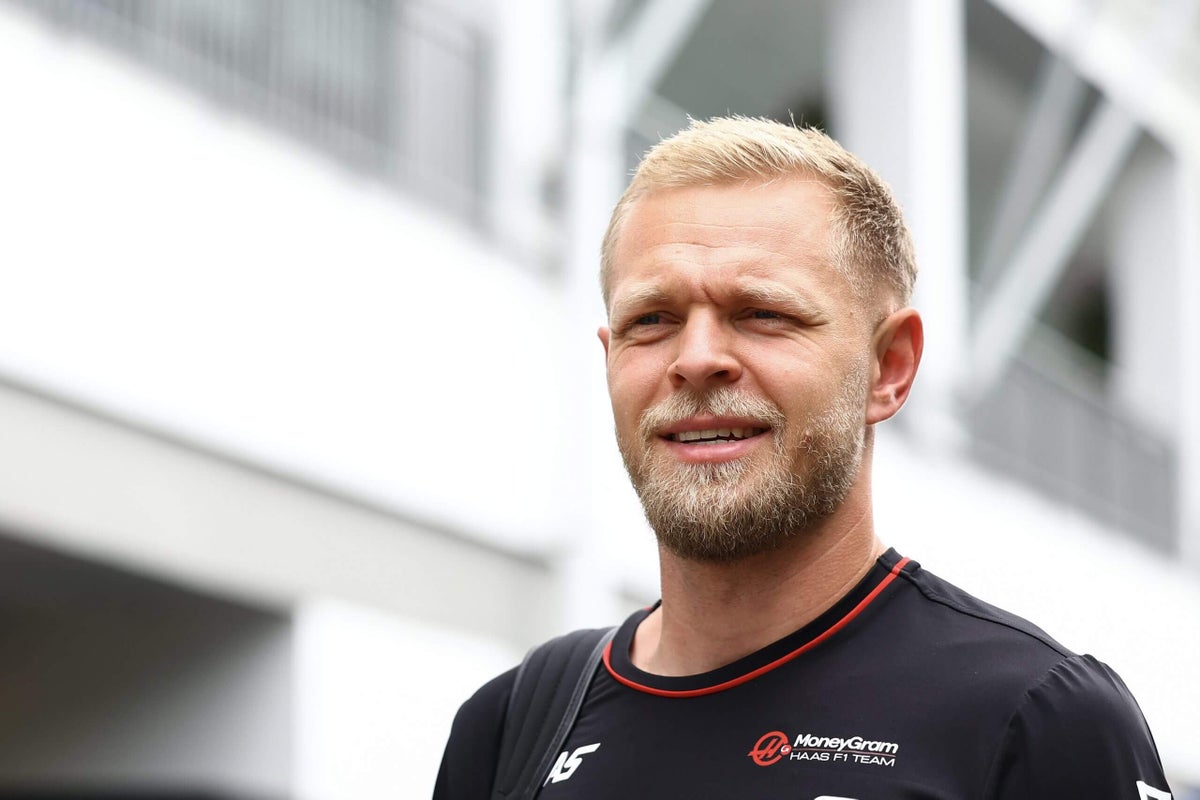Stay informed on all the biggest stories in Formula 1. Sign up here to receive the Prime Tire newsletter in your inbox every Monday and Friday.
SINGAPORE — Returning to the Formula One paddock after serving his ban in Baku, Kevin Magnussen relishes the chance to race with a clean slate.
“You get punished, and then you come back, and you’re, like, all ready to… f— s— up now!” Magnussen joked. “It’s funny how that works.”
Magnussen became the first F1 driver in 12 years to be banned from a race after hitting the 12 penalty point threshold for a clash with Pierre Gasly at Monza, forcing him to miss the Azerbaijan Grand Prix.
The Dane treated it as “a little extra bonus weekend off with the family.” He let Haas know that he was available for any input and advice while Oliver Bearman, the Ferrari youngster, took over his seat. Magnussen admitted it was “kind of a weird feeling” to watch another driver in his car. But he was otherwise glad to switch off from the rigors of a race weekend.
“I watched some of the race. I had it on in my gym on Sunday,” Magnussen said. “I kind of was watching with half an eye while training. So I tried to switch my mind off. I took the opportunity to have a nice weekend off.”
Magnussen’s penalty points total is now reset for the final seven races of the year, starting in Singapore this weekend. While he never raced any differently despite being on the brink of a ban before Monza, he admitted it was “nice to know that’s not a factor anymore.”
“I don’t think it’s going to change anything,” Magnussen added. “In that moment in Monza, in all the battles I’ve had, I’ve never found myself thinking, ‘Oh, I need to be careful here; otherwise, I get a race ban.’ In those races before Baku, before the race ban, I didn’t think about it.”
It may not have changed Magnussen’s signature approach toward hard racing, which has delighted fans, frustrated rivals and helped Haas score precious points this year. However he does feel that F1’s penalty points system, introduced for the 2014 season, is no longer fit for its purpose.
“It’s not a great situation for F1, I think, to restrict racing in that way,” Magnussen said. “It feels bad when the sport you love so much changes in a way you don’t appreciate.
“I like hard racing, and I think that’s a big part of the beauty of motorsport, is the battles. The on-the-limit and slightly over, that balance between going slightly over and under the limit, is what makes your race.
“At the moment, it feels like they’re punishing ridiculous things. I’d like to see, personally as a Formula One fan, the sport open up again and allow the great racing that can be seen on track.”
Magnussen was not alone in his criticism of penalty points. In the wake of the Monza incident, Gasly, who he hit at the second chicane, criticized the decision to penalize Magnussen. A number of drivers also questioned how the system functioned at the next race in Baku.
Magnussen (R) is notorious for his hard racing style. (ANDREJ ISAKOVIC/AFP via Getty Images))
When the system was introduced in 2014, there were 19 races on the calendar, compared to the current tally of 24 plus six sprint races. The points system has never been adjusted relative to the calendar length.
Magnussen said that the F1 drivers’ union, the Grand Prix Drivers’ Association (GPDA), would have some influence in giving its feedback to the FIA. But he thought that there was already a growing understanding from F1’s governing body.
“I feel like they know it’s not the right way at the moment,” Magnussen said. “Hopefully, they will open up and realize they need to trust the drivers.
“Of course, there are things you have to clamp down on. There are things, like moving under braking and reacting to movement — there are dangerous things that you should clamp down on.
“But the little things, just let it go.”
He thought bans were better saved for “extraordinarily dangerous driving” instead of a result of incidents accumulating.
Of Magnussen’s 12 penalty points, 10 were accrued for collisions with other drivers. He also got two penalty points in Miami for a third strike for leaving the track and gaining an advantage in the sprint race.
This is where Magnussen thought a series like IndyCar had a better system in place, where incidents are judged on a case-by-case basis instead of through a formal framework. Magnussen called IndyCar’s racing “fantastic” and believes its track design approach is more appropriate.
“The drivers are respectful to each other,” Magnussen said. “They’re left with that responsibility in their hands, and I think that works. It has to be tough, and these cars are put on track with the knowledge that they might get damaged, and if they do, the driver that damages the car, he gets penalized naturally.
“The only thing that is different in Formula One to IndyCar are the tracks. The tracks (in F1) are not great for racing; with all this track limits stuff, I got all my penalty points pretty much for track limits.
“At the end of the day, I think that’s kind of stupid to be a few centimeters out of a white line and end up with a race ban because of that.
“It’s not the sport I love.”
Magnussen will leave Haas at the end of the 2024 season. Even if it does prove to be the end of his rollercoaster, regret-free F1 career, he joked there was one role often filled by ex-drivers that would never want.
“I have considered that I will never be a race steward,” Magnussen said with a laugh.

GO DEEPER
‘A fantastic life’: The joys, challenges, and priorities of F1 fatherhood
Top photo: Mark Thompson/Getty Images

